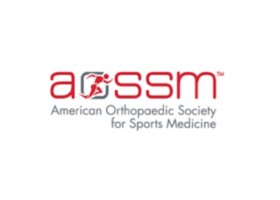
Authors:
Marco-Christopher Rupp, Annabel R Geissbuhler, Joan C Rutledge, Richard Amendola, Jared A Hanson, Kent C Doan, Rony-Orijit A Dey Hazra, Peter J Millett
Abstract:
Background:
Snapping scapula syndrome (SSS) is a rare condition that is oftentimes debilitating. For patients whose symptoms are resistant to nonoperative treatment, arthroscopic surgery may offer relief. Because of the rarity of SSS, reports of clinical outcomes after arthroscopic SSS surgery are primarily limited to small case series and short-term follow-up studies.
Purpose:
To report minimum 5-year clinical and sport-specific outcomes after arthroscopic bursectomy and partial scapulectomy for SSS and to identify demographic and clinical factors at baseline associated with clinical outcomes at minimum 5-year follow-up.
Study design:
Case series; Level of evidence, 4.
Methods:
Patients who underwent arthroscopic bursectomy and partial scapulectomy for SSS between October 2005 and February 2016 with a minimum of 5 years of postoperative follow-up were enrolled in this single-center study. Clinical outcome scores, including the 12-Item Short Form Health Survey (SF-12), American Shoulder and Elbow Surgeons (ASES) Shoulder Score, shortened version of the Disabilities of the Arm, Shoulder and Hand (QuickDASH) score, Single Assessment Numeric Evaluation (SANE), and visual analog scale (VAS) score for pain, were collected at a minimum 5-year follow-up. Additionally, it was determined which patients reached the minimal clinically important difference. Bivariate analysis was used to determine whether baseline demographic and clinical factors had any association with the outcome scores.
Results:
Of 81 patients eligible for inclusion in the study, follow-up was obtained for 66 patients (age 33.6 ± 13.3 years; 31 female). At a mean follow-up of 8.9 ± 2.5 years (range, 5.0-15.4 years), all of the outcome scores significantly improved compared with baseline. These included the ASES (from 56.7 ± 14.5 at baseline to 87.2 ± 13.9 at follow-up; P < .001), QuickDASH (from 38.7 ± 17.6 to 13.1 ± 14.6; P < .001), SANE (from 52.4 ± 21.2 to 82.7 ± 19.9; P < .001), SF-12 Physical Component Summary (from 39.7 ± 8.3 to 50.3 ± 8.2; P < .001), SF-12 Mental Component Summary (from 48.2 ± 11.7 to 52.0 ± 9.0; P = 0.014) and VAS pain (from 5.2 ± 2.1 to 1.4 ± 2.0; P < .001). The minimal clinically important difference in the ASES score was reached by 77.6% of the patients. Median postoperative satisfaction was 8 out of 10. It was found that 90.5% of the patients returned to sport, with 73.8% of the patients able to return to their preinjury level. At the time of final follow-up, 8 (12.1%) patients had undergone revision surgery for recurrent SSS symptoms. Older age at surgery (P = .044), lower preoperative SF-12 Mental Component Summary score (P = .008), lower preoperative ASES score (P = .019), and increased preoperative VAS pain score (P = .016) were significantly associated with not achieving a Patient Acceptable Symptom State on the ASES score.
Conclusion:
Patients undergoing arthroscopic bursectomy and partial scapulectomy for SSS experienced clinically significant improvements in functional scores, pain, and quality of life, which were sustained at a minimum of 5 years and a mean follow-up of 8.9 years postoperatively. Higher patient age, inferior mental health status, increased shoulder pain, and lower ASES scores at baseline were significantly associated with worse postoperative outcomes.
For the complete study: Minimum 5-Year Clinical and Return-to-Sport Outcomes After Primary Arthroscopic Scapulothoracic Bursectomy and Partial Scapulectomy for Snapping Scapula Syndrome
